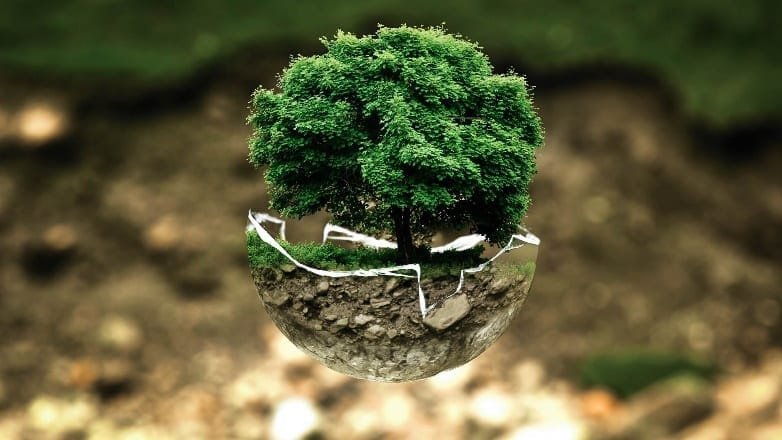Experiencing the joy of being a bonsai gardener is not possible without using the best type of soil.
The truth is, picking the right type of soil is one of the most crucial decisions gardeners need to make. Nowadays, there are numerous (if not endless) options when it comes to figuring out where to buy bonsai soil.
But the real quest is to be able to distinguish high-quality bonsai soil from poor-quality counterparts.
Things to Look for when Purchasing Bonsai Soil

For those who are still wondering where to buy bonsai soil, it is best to skip the rush.
Maybe you have come across seemingly perfect-fit bonsai soil while roaming the web? Or maybe you have spotted an ideal bonsai soil mix at your local garden store?
Before you invest in any type of bonsai soil, take the time to understand what your bonsai trees really need and why do they need it.
As a rule of thumb, the best type of bonsai soil is tree-specific.
You can use a basic potting soil mix suitable for bonsai trees and add the best amendments depending on the tree species yourself.
Also, you can search for readily-available bonsai soil tailored specifically for the bonsai tree species you are taking care of.
A top-grade bonsai soil mix will possess good water-retention rates. Furthermore, a top-grade bonsai soil mix will ensure proper drainage, as well as good aeration.
In a nutshell, it is all about compaction and balance as highlighted in Water Retention and Drainage in Bonsai Soil, The Journal of American Bonsai Society. Then again, choosing the best type of bonsai soil that is ultimately tree-specific is also essential.
However, centuries of dedicated research and the shared experience of bonsai gardeners have made it clear that good bonsai soil featuring a balance of moisture retention and drainage, and providing excellent aeration along with a sturdy anchor for the roots is capable of satisfying the needs of most types of bonsai trees.
Video by Appalachian Bonsai – Bonsai Soil Tests: Part 1: Water Retention
Source: youtube.com
Bonsai Soil Components You Need to Know

The most popular bonsai soil components include akadama, fine gravel (also referred to as fine grit), lava rock, pumice, and organic compost.
Usually, bonsai soil for deciduous trees should consist of 50% Akadama, 25% Pumice and 25% Lava rock. When it comes to coniferous/pine trees, bonsai soil should consist of 33% Akadama-33% Pumice-33% Lava rock.
More importantly, these numbers are not a form of a fit-them-all magic formula. For best results, when looking forward to where to buy bonsai soil, consider the climate specifications of the area where you reside.
For instance, if you live in a region where humidity levels are rather high, you may need to add extra lava rock to increase drainage and aeration.
Then again, further amending the type of bonsai soil based on the unique specifications of the tree you are about to cultivate will ensure the highest quality.
Akadama
Quintessentially, akadama is a naturally occurring Japanese clay that is then hard-baked.
If using akadama on its own, bonsai gardeners need to keep in mind that regular re-potting is crucial. That’s because akadama gradually breaks down, thus, reducing aeration.
Since akadama tends to be an expensive option, many bonsai gardeners opt for mixing it with additional components that help to increase drainage and improve aeration.
Fine gravel
For beginner bonsai gardeners, fine gravel/grit seems to be an appealing option for improving drainage and aeration. Fine gravel is typically placed at the very bottom layer of a bonsai pot.
However, better working alternatives to fine gravel include pumice, lava rock, and akadama.
Lava rock
Lava rock is a praised component of high-quality bonsai soil. It helps to balance water retention rates and provides an excellent structure to soil that is especially well-suited for growing bonsai trees.
Pumice
Pumice is similar to lava rock in terms of providing excellent water retention. Also, it is a volcanic derivative that is soft to the touch. It is very beneficial for assisting in anchoring the roots.
Organic compost
Organic compost, and specifically, organic potting compost consists of organic matter, peat, sand, and perlite. It cannot be used on its own in the art of growing a bonsai tree.
That’s because organic potting compost doesn’t possess the perfectly balanced drainage-aeration-water retention rates bonsai trees need to flourish. Also, organic matter breaks down over time, thus, absorbing water too poorly.
However, organic potting compost can make a good addition in a bonsai soil potting mix.
Final Takeaways

At depart, we want to re-irritate on the utmost importance of understanding the unique needs of the tree species you are about to make a part of your bonsai journey.
When trying to figure out where to buy bonsai soil you should first know what your bonsai tree requires.
A traditional Japanese proverb goes like this: “ 一寸先は闇” (Issun saki wa yami) – “it is dark one inch ahead you,” or in other words – expect the unexpected – one of the profound lessons that every bonsai gardener learns sooner or later.
For bonsai is willing to reveal its true beauty and wisdom only to those who are patient enough to take trials and errors with a smile and dedicated enough not to give up.


